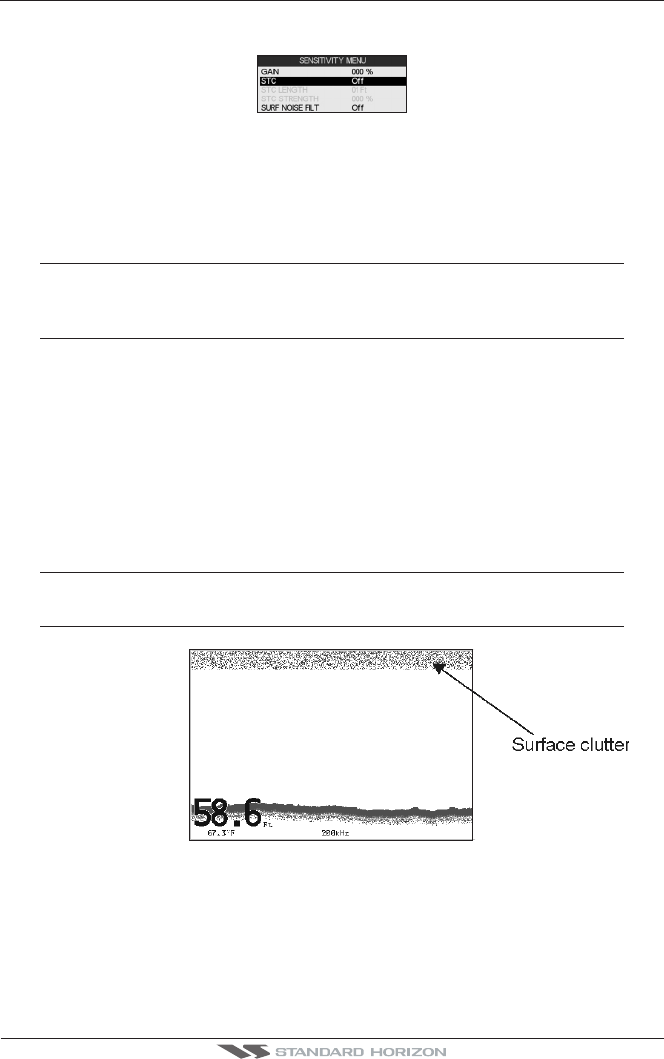
FF520 Page 31
5.5 SENSITIVITY MENU
All settings in the Sensitivity menu are related to the selected Fish Finder transmit frequency
(50 or 200kHz).
Figure 5.5 - Sensitivity menu
5.5.0 Gain
Allows you to control the Sensitivity of the unit’s receiver from 0 to 99%. To see more detail, increase
the receiver Sensitivity by selecting a higher Gain percentage. If there is too much detail or if the
screen is cluttered, lowering the Sensitivity may increase the clarity of the display.
NOTE
When the Gain Mode option is set to Auto, the receivers Gain cannot be changed.
When the Gain Mode option is set to Manual, the Gain can be manually adjusted. When switching
from Automatic to Manual Mode, the Gain + Offset value is copied into the Manual Gain setting of
the receiver.
5.5.15.5.1
5.5.15.5.1
5.5.1
STCSTC
STCSTC
STC (Sensitivity Time Control)
The purpose of this selection is to filter surface noise.
The STC functions reduces or eliminates Surface Clutter signals by changing the Sensitivity
of the receiver, decreasing it near the surface and gradually increasing it as the depth
increases. Its default value is SHORT for the 200kHz frequency and MID for the 50KHz
frequency. Such values are good in most conditions. However when navigating in very
shallow waters it may be necessary to switch it to OFF, while in very deep waters with a lot
of Surface Clutter it may be better to increase it to MID or LONG.
NOTE
In some situations it may be necessary to adjust the STC so the sounder can read through the
surface noise and show the bottom. One indication of the STC to be changed is when the display
intermittently changes the depth from the correct depth to a very shallow depth.
Figure 5.5.1 - STC - Surface Clutter
The STC can be changed from Short, Mid, Long and custom.
5.5.1.0 STC Length
This is the depth range which the STC operates. In custom mode it can be varied from 0
to 1000Ft (60 or 255Ft on previous software versions). In preset mode it’s value is reported
in the following table (See Par. 5.5.1.2).


















